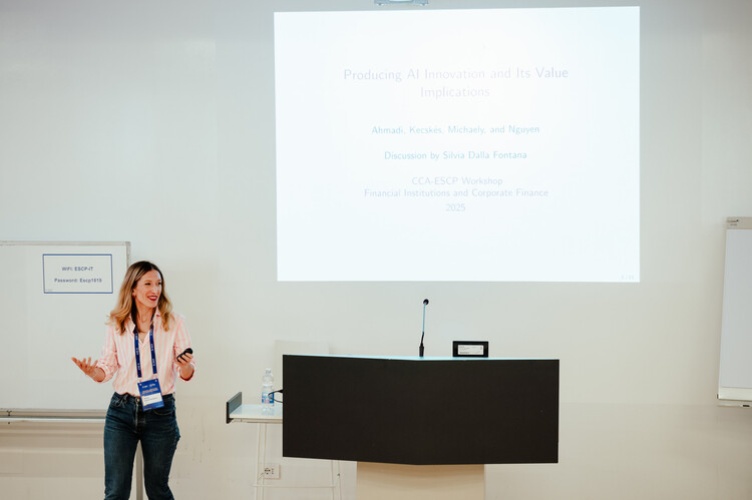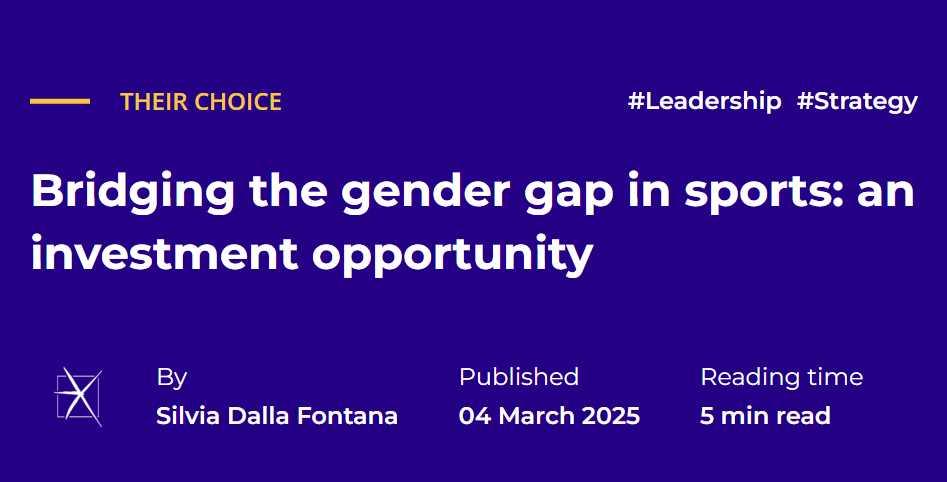Venture Patterns: Silvia Dalla Fontana on Finance, from Deep Tech to Gender Equity
Silvia Dalla Fontana approaches finance research with the same steadiness and long-term focus she brings to ultra-running — a matter of holding pace over long horizons, adjusting to rough terrain, and keeping sight of the goal “Finance is about how we choose to allocate capital, and these choices shape the kind of future that becomes possible”.
Her research is about making those choices visible. She studies the dynamics that govern how venture capital is allocated, to which startups, in which places, under what conditions — and asks whether those rules are fit for the world we want to build.
Venture Capital and the Challenge of Deep Tech for Climate
In her 2023 paper Innovating to Net Zero, Silvia and her co-author examined two decades of U.S. patent data to see whether venture capital is backing the technological breakthroughs needed to reach climate goals. They found that although VC-backed firms generate only a small share of patents, their contributions are often the most influential — especially in deep tech fields like clean energy storage, industrial decarbonisation, and carbon capture, where scientific breakthroughs are vital. Yet investment has been shifting away from these areas toward quicker, less capital-intensive innovations. “It’s not that VCs are risk averse,” she says. “In fact, they are risk specialists. But deep tech innovation has a different profile: costly prototypes, uncertain scaling, slow-moving institutional customers. And that doesn’t always line up with how the venture model is designed.”
Their point is that venture capital’s incentives don’t always align with the slower, riskier path that deep tech requires. She and her co-author discuss alternatives: government procurement to reduce market risk, patient-capital funds with longer horizons, and public–private partnerships to bridge the gap from lab to market. “From semiconductors to vaccines, history shows how government involvement can be decisive in accelerating progress in certain areas. The open question is whether capital structures will adapt in time to meet the challenge of climate innovation.”
A Stress Test for Venture: From In-Person to Online
If climate exposes a potential structural mismatch between the VC model and the most urgent societal challenges, the Covid-19 pandemic offered a different kind of stress test: what happens when the structure itself is disrupted overnight? In her paper From In-Person to Online: The New Shape of the VC Industry (2023), Silvia and her co-authors studied how venture capitalists adapted when face-to-face meetings and site visits were suddenly impossible. Deals stretched well beyond the usual hubs, and founders outside places like Silicon Valley suddenly found themselves on the map. Even after restrictions were lifted, that broader geography largely stayed in place.
At the same time, investors leaned more heavily on familiar sectors and trusted partners, showing that online interactions could expand reach but not fully replace the trust of face-to-face contact.
The picture that emerges is a hybrid system — more open than before, yet still shaped by existing networks. “What we see is cautious adaptation,” she explains. “The geography has widened, and so far, part of this expansion seems to be holding.”
How First Impressions Shape Investment
In another entrepreneurial finance project, Silvia and her co-authors use algorithms to study how first impressions — facial traits like trustworthiness, dominance, attractiveness, and youthfulness — influence venture funding decisions. Drawing on psychology research about how people form snap judgments, they asked whether these cues predict which startups receive funding.
The answer, they found, is yes, with variation across industries and gender. The authors show that venture decisions are shaped not only by business fundamentals but also by the heuristics and impressions that come into play when investors face high uncertainty.
Her research studies how people make decisions in contexts where information is limited. By making invisible cues more visible — whether first impressions or inherited norms — she hopes research can contribute to better-designed systems and better outcomes.
Human heuristics are part of the allocation machine.If we want capital to go to the best ideas, we need to understand the signals that influence those judgments.
 Silvia Dalla Fontana
Silvia Dalla FontanaAssistant Professor of Finance at ESCP
Finance and Inclusion
Silvia draws parallels between finance and other domains where exclusion has long distorted value. In an essay on women’s sports, she described how bans, underfunding, and lack of visibility limited participation and stunted growth. The comparison with venture is not rhetorical. Both are arenas where talent exists but is often unseen, where structures amplify some voices and marginalise others, and where the absence of role models perpetuates inequity.
These patterns are not just visible in sport. That is why she sees inclusion in early-stage finance as so critical. The companies that were small startups only fifteen years ago are now reshaping work, politics, and daily life.This illustrates why the allocation of capital matters: it helps determine which futures take shape. Markets can sometimes overlook certain areas, and decisions about which startups are funded are relevant well beyond the fate of any single firm.
The Long-Distance Mindset
Silvia is at the beginning of her career — she completed her PhD at the Swiss Finance Institute in 2024, was a visiting scholar at Imperial College London, and joined ESCP’s Turin campus soon after — but already her research points to a clear set of interests around how early-stage finance shapes the trajectory of startups and, ultimately, the innovations that reach the market.
She often draws on her experience as a long-distance runner, where progress comes through patience and consistency rather than quick bursts. The same mindset shapes her research: steady in focus and oriented toward understanding the structures that influence long term outcomes. Progress comes from staying on course, adjusting when the terrain gets rough, and keeping sight of the long-term dynamics her work aims to understand.
This article is based on the conversation with Silvia Dalla Fontana, held in September 2025.
Relevant link
Campuses

